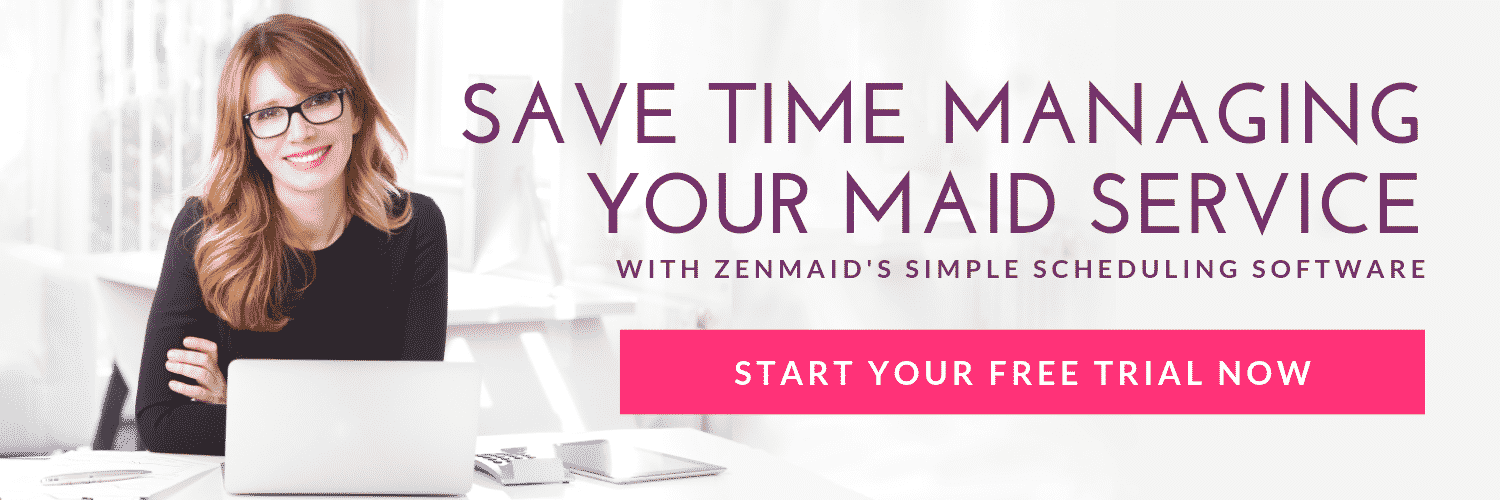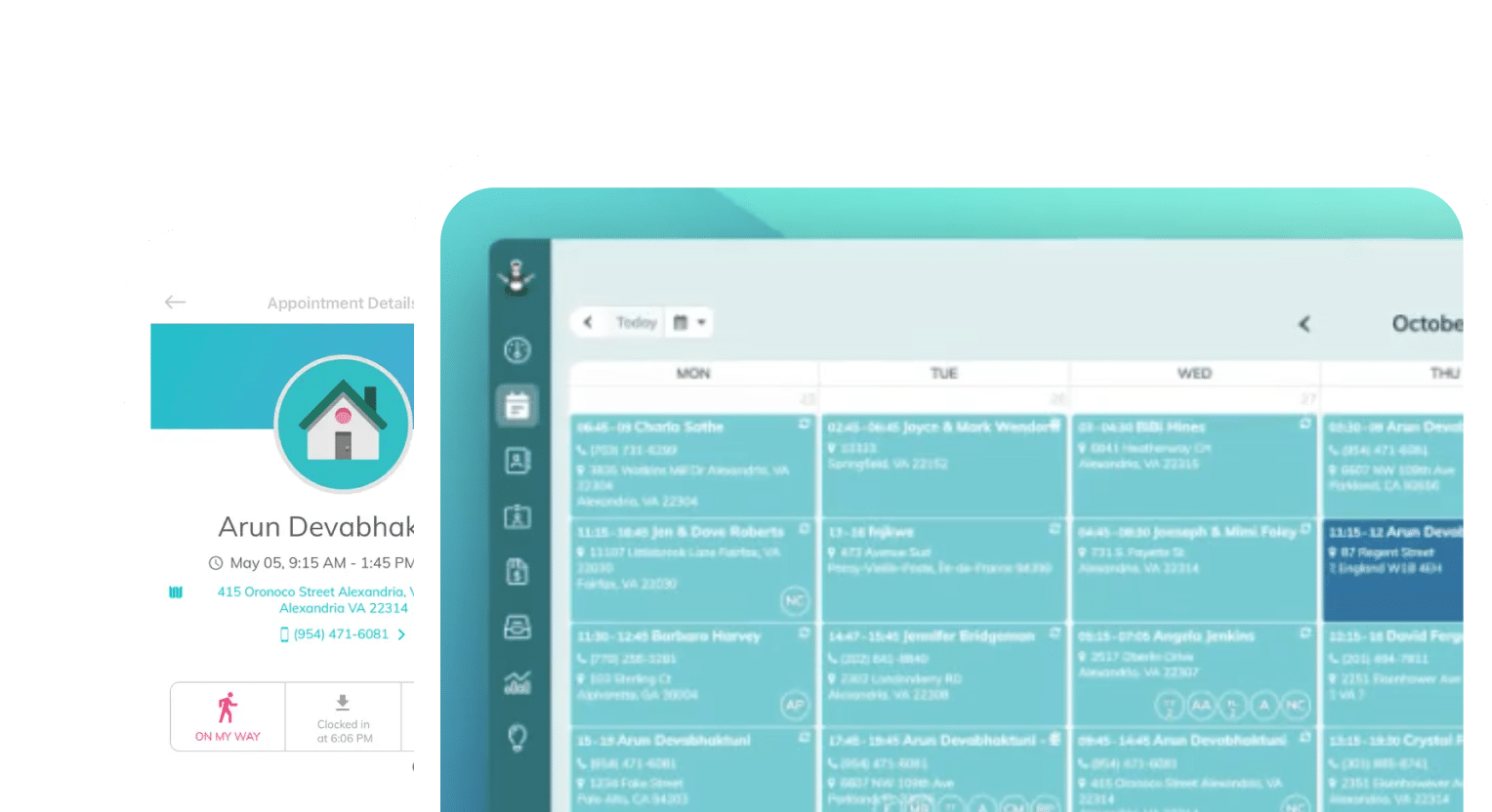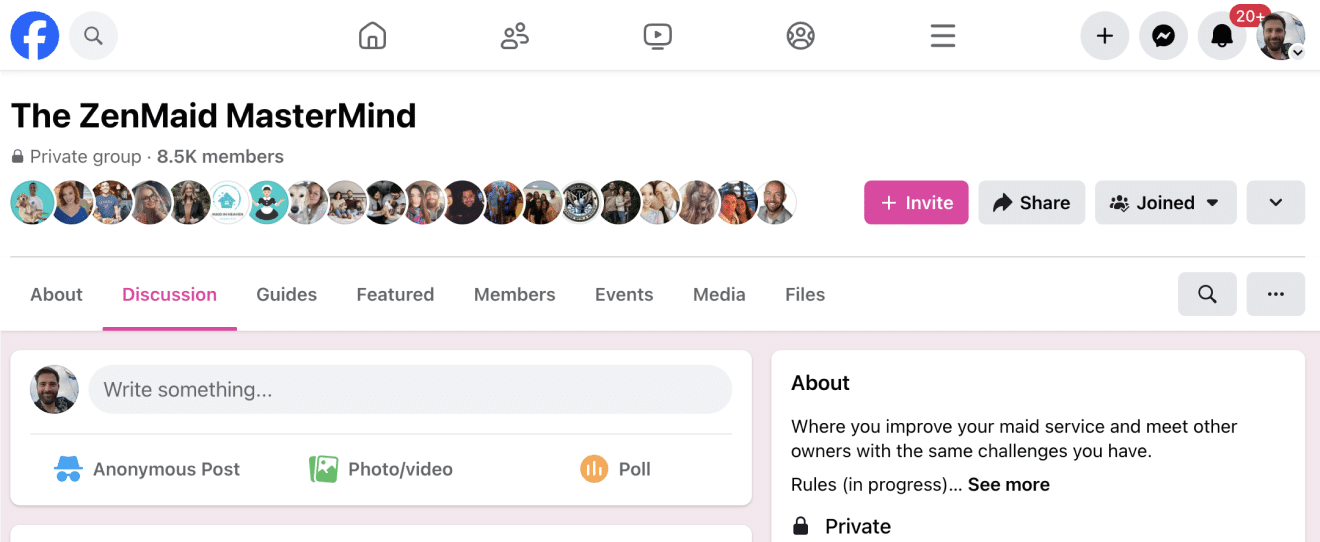17 Common Mistakes To Avoid Making As a Maid Service
Growing your own maid service business from the ground up requires a lot of hard work, and trial and error. Many cleaning business owners spend years figuring out the right ways to manage their business and end up trying a lot of strategies before figuring out the keys to success.
On the road to growth and profitability, it’s normal to make mistakes, learn from them, and try new things. But wouldn’t it be helpful if you could skip a few steps? In this post, we’ll break down 17 common mistakes that maid services business owners make, and how you can avoid them.
1. Not having policies or procedures in place
Standard operating procedures (SOPs) can be the difference between chaos and your business running smoothly. Without SOPs, it’s hard to know exactly how your business operates, so you end up winging it.
Having SOPs will help your team know how to handle special requests and ensure that every client gets the same treatment. It will also save you time from having to answer the same question over and over and make sure your staff has proper training material to handle customer requests on their own.
2. Allowing customers to book every three weeks
Booking customers every three weeks creates a gap in your schedule, which can prevent you from booking more weekly or biweekly customers. This is exactly why ZenMaid only allows customers to book cleanings on a 1, 2, or 4 week basis.
Even though some customers might want to book a cleaning every three weeks, create a policy that incentivizes customers to book weekly or biweekly. Treat any other bookings as a one-off appointment that can only be fulfilled if there is a cancellation in your calendar.
3. Not setting expectations on the outcome of a job
You might not always agree with your customers on what needs to be done, but you can avoid having difficult and awkward conversations by creating a service agreement for every cleaning you do. This agreement lets your customer know exactly what to expect from a cleaning with your maid service.
Before each cleaning, do a walkthrough to clarify with the customer what is included in the cleaning. If the customer has something they want to add, you can add it to the scope and let them know of any additional fees.
4. Entering into partnerships without assessing the risk
In some cases, business partnerships can be a match made in heaven. However, before you enter into a partnership in your maid service, make sure you have many detailed discussions with your potential partner before making any decisions.
Oftentimes, we’ve seen that the person who starts the business will feel more attached to it and end up doing more work. Always make sure you have a legal contract in place that outlines what each person is expected to bring to the table, as well as how much each partner will earn from the business.
5. Hiring anyone who shows up for an interview
Most maid services have been in a position where they urgently need more cleaners. This can make you desperate to hire new talent, despite whether they are qualified.
Avoid making impulsive hires by having a strict hiring process in place. Stick to this process and don’t hire anyone that does not meet all of your criteria. After all, your employees are an extension of your business. It’s important to have a tight screening process to avoid high turnover and make sure you’re only hiring people who embody your brand.
Here are more tips on how to always find high-quality cleaners for your maid service.
6. Taking complaints personally instead of tactfully
You want to give high-quality service every time. So when a customer has a complaint, it’s hard not to take things personally. When you receive a negative comment, it’s important to remain professional and try your best not to see it as a reflection of you as a business owner.
For these situations, check out our complete guide on how to remain zen during tough conversations.
7. Giving discounts to attract customers
A lot of business owners think they won’t get new customers without coupons or discounts. We want to debunk this myth. Giving discounts not only devalues your service, but it sets a precedent with your customers that they should wait until you’re having a sale or offering another discount. Rather than selling a low price, sell excellent service and value. You’ll attract customers who are willing to pay for what they want and who see the value in what you offer.
8. Not planning for taxes
No matter what you earn, you should always put away at least 30% of your earnings for taxes. Learn about your state’s taxes to get an exact number of how much you can expect to pay in taxes every year.
It’s crucial to figure out your taxes from day one and start putting money aside after your very first sale. If you don’t, your amount owed can easily sneak up on you, causing a lot more problems for you and your business in the future. Make it part of your business plan to put away money for taxes into a separate business account. This way, you won’t even see it and won’t be tempted to touch it until tax time. Consider implementing a system like Profit First to make sure you’re always prepared for tax time, and still paying yourself appropriately.
9. Not tracking expenses
As your business grows and you gain more customers, your expenses will increase as well. As a maid service, it’s crucial to track all of your costs. You need to know how much you’re spending to understand how much you can budget for next year. Knowing your numbers can help you determine how much you can spend on hiring, payroll, marketing, and other expenses.
10. Not asking for ratings or reviews.
Get in the habit of asking every customer for a rating or review. Choose one or two platforms to start and ask every customer to leave an honest review. These reviews are extremely valuable in helping you attract new customers.
You can also follow up with past customers and ask for feedback on their experience. You want the input to continue to improve your business, and you also benefit from the social proof that comes from new customers seeing your good reviews.
11. Not getting insurance
You might think that you don’t need it or that your business is not big enough to benefit from insurance, but this is a big mistake. Don’t wait until it’s too late or until it happens before you consider getting insurance for your business.
At a minimum, make sure that you can’t be held personally liable for any property damage or if anything goes wrong when you’re on someone else’s property.
12. Keeping emotionally abusive customers
You might have customers who are a pain to work with, but you keep them because they give you good business or referrals. Keeping these high maintenance customers is not worth the emotional labor and tends to create more work and less profit for you in the long run.
It’s important to set boundaries, and if a customer continues to break those boundaries, you end the relationship in a respectful and professional way. This will protect your cleaners from dealing with rude or emotionally abusive cleaners and show that you care about their well-being on the job.
13. Believing everything you read on the internet
There are hundreds, if not thousands, of groups on Facebook tailored towards cleaning companies. (We know, we have one) But just because a group claims to be full of industry professionals doesn’t mean that you should believe everything you see in those groups. Not all of the information is relevant to your business.
Many of the business owners in these groups are speaking from their own experience. So while something worked well for them, it doesn’t mean you should completely pivot your existing strategy to do what they did.
14. Advertising with no game plan
The average consumer needs at least seven interactions with your brand before they decide to buy your service. So for your advertising campaigns to succeed, you need to have an intentional game plan that prioritizes long-term growth. It’s not enough to advertise one time and expect it to work. You need to be able to create consistent campaigns over and over again to build brand recognition with your customers.
15. Hiring friends and family
It’s very admirable to want to create job opportunities for your loved ones. However, hiring friends and family often comes at the expense of your business. These hires create blurred lines if you’re unwilling to enforce rules for employees you have close personal relationships with. If you hire friends or family, make sure you are holding them to the same standard and treating them with the same professionalism as the rest of your team.
Here is Angela explaining why this is just a simple no-no for your maid service:
16. Giving an estimate without enough information
If you’ve been in business for a long time, you may know exactly what questions to ask to give a new customer an estimate over the phone. But if you’re newer to the business, you may likely undercut yourself because you underestimate the amount of work that needs to be done.
Before giving an estimate, gather as much information as possible. If a customer asks for an estimate over the phone or email, feel free to give them a price range based on predetermined questions you have and then follow that up with a walkthrough for an exact price. Did you know: you can set up your ZenMaid booking form to give a solid estimate for the job.
17. Not investing enough in professional development or business education
Don’t keep making the same mistakes. Learn from people who are there to help and have been where you are. Hiring a business coach or paying for mentorship can help you get to where you need to be more quickly and without making as many mistakes.
Luckily, there are tons of online resources aimed at helping maid service owners succeed. Even if you’re a seasoned business owner, every stage of your business also requires a new set of skills and comes with new challenges. It’s important to invest in your business every step of the way. One way to invest is to join a community of like-minded people and business owners, like the ZenMaid Mastermind Group.
To learn more about the different ways you can invest in your cleaning business, and yourself, and check out the full replays of all of the presentations from the 2020 Maid Summit. The summit was specifically designed to help cleaning business owners take the next step in their business, and features talks from over 50 industry professionals who want to help you succeed.
About the presenter
Angela is a cleaning industry expert with over 25 years of experience as a professional house cleaner. Now she wants to help other maid service owners learn from her expertise and mistakes by teaching them to work smarter, not harder. Check out her massive library of YouTube videos full of even more valuable tips for maid service owners.
This talk first aired at the 2019 Maid Service Success Summit.
The Maid Summit is an annual online event that brings together the most successful leaders in the cleaning industry, like Debbie Sardone, Angela Brown, Courtney Wisely, Amy Caris, Chris Schwab and more. Get free access to masterclasses and workshops that will help you to grow, scale and automate your cleaning business so you can get more leads and create more profit. Make sure you’re on our email list to find out how to get free tickets to the next event.
If you liked this article, here are some more you might enjoy:
- How One Cleaning Tech Employee Becomes Irreplaceable
- What I Wish I Had in Place *Before* My First Nightmare Client
- The Divorced, Broke, and Fearless Journey to Six-Figure Vacation Rental Success
- How a 20-Year Cleaning Business *Drastically* Increased Revenue by Ditching Pen and Paper
- 8 Website Mistakes That Are Costing You Leads (And How to Fix Them Fast)

 Frustrated with your scheduling? Try the easiest-to-use calendar app, made by and for maid service owners.
Frustrated with your scheduling? Try the easiest-to-use calendar app, made by and for maid service owners.










